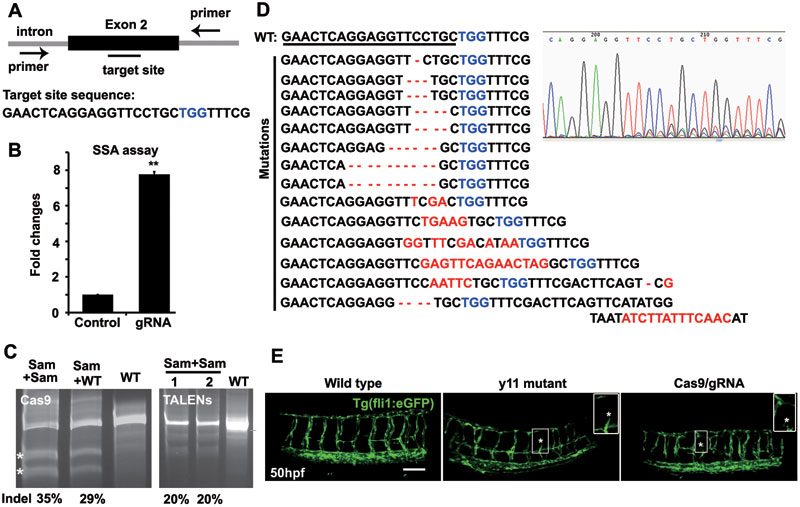Fig. 2
Cas9/gRNA induces indels in the etsrp locus in zebrafish. (A) Cartoon showing the position of the target site and its sequence in the etsrp locus in zebrafish. (B) The SSA recombination assay showing luciferase activity with and without cleavage of the target site by the Cas9/gRNA system in 293T cells. The luciferase activity increased by 8-fold in the group with gRNA (Cas9 + gRNA) compared with the control group (Cas9 + empty vector). Error bars indicate SD, n = 3. **P < 0.01. (C) Representative SURVEYOR assay showing 35% efficiency of Cas9-mediated cleavage in a single embryo and 20% by TALENs-mediated cleavage in 2 embryos at 50 hpf. The indels of 8 embryos were measured with a frequency of 31.2% - 38.4%. * indicates the cleavage bands. Sam, sample treated by Cas9/gRNA or TALENs; WT, wild type. (D) Representative Sanger sequencing results of the PCR amplicons from 8 individual embryos at 50 hpf showing indels (red) induced by Cas9/gRNA in the targeted etsrp locus. PCR fragments were amplified and cloned into the pEASY vector from an individual embryo for Sanger sequencing (20-30 clones for each embryo). TGG (blue) is the PAM sequence. Deletion is represented by a dashed line and insertion is highlighted in red. (E) Fluorescent images showing abnormal intersegmental vessels that were similar in the etsrpy11 mutant and Cas9/gRNA-induced mutant, compared with the wild-type transgenic embryo at 50 hpf. * indicates defects in intersegmental vessel sprouting that are enlarged in the insets. Scale bar, 100 μm.

